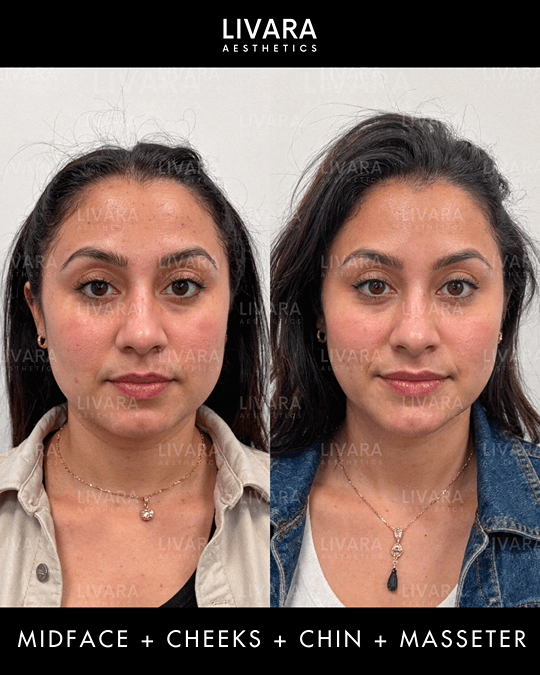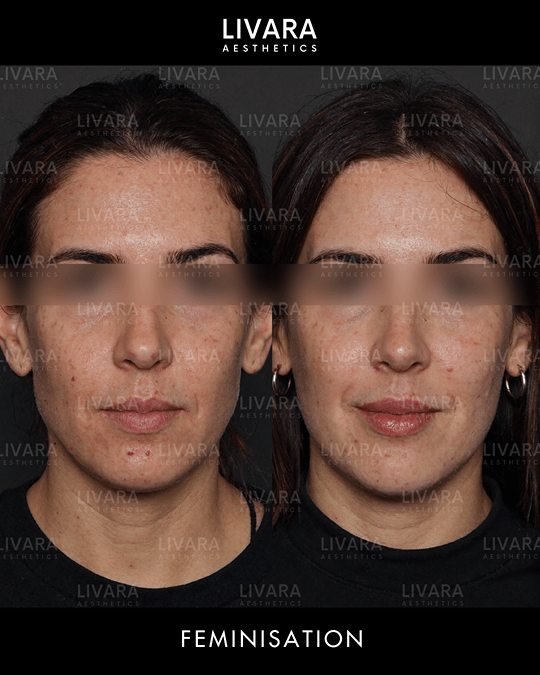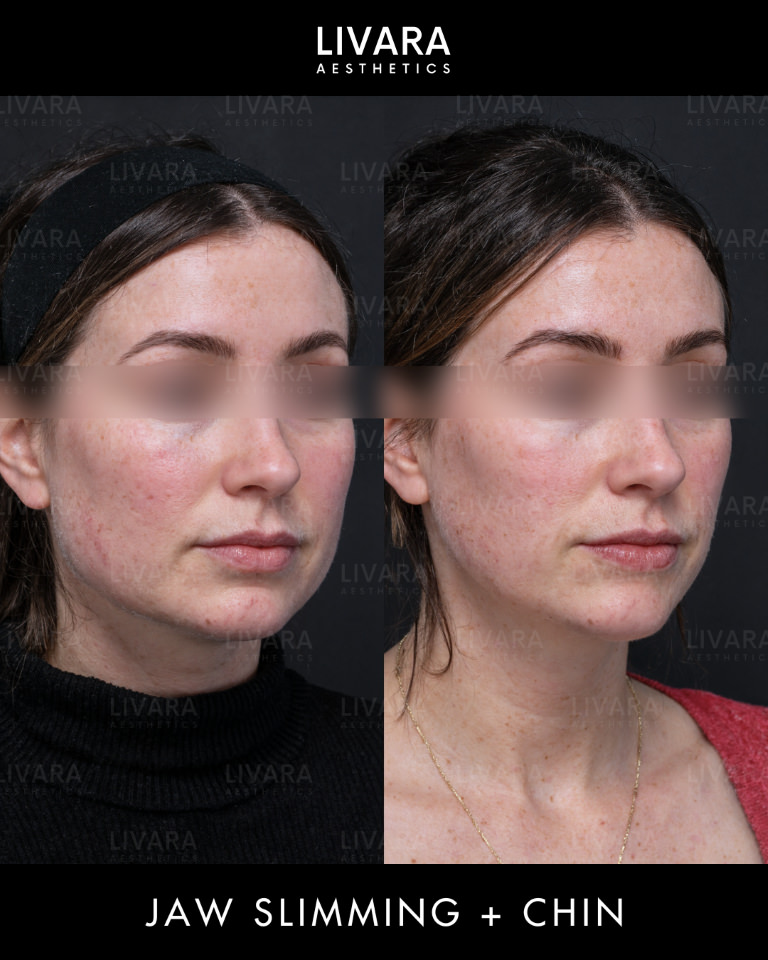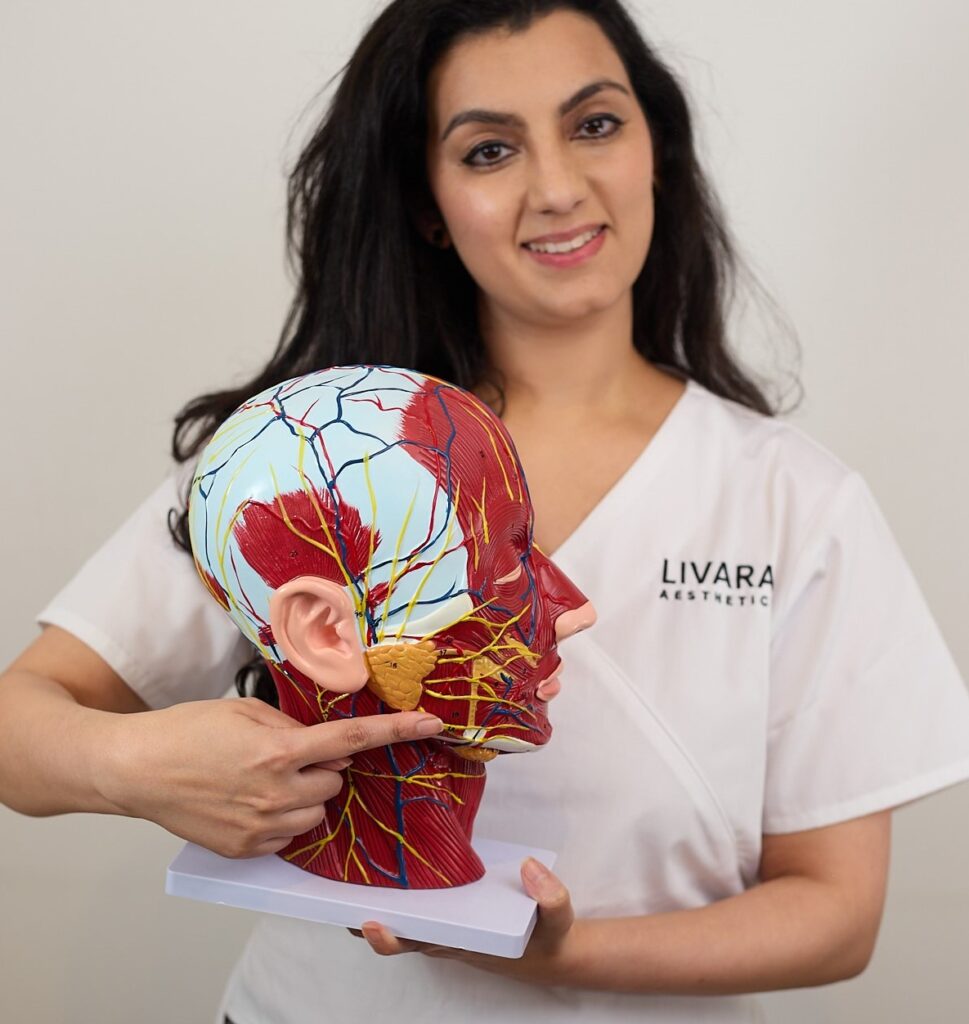My Complete Guide to Masseter Botox for Jaw Slimming & Bruxism
Masseter Botox consistently delivers some of the most dramatic “wow” moments in my clinic. It’s a treatment that genuinely changes lives, easing chronic headaches, jaw tension, TMJ and teeth-grinding pain, while also refining facial shape for those self-conscious about a strong or square lower face. Yet, despite its popularity, it remains one of the most misunderstood cosmetic and medical procedures.
The confusion surrounding it leads to two common problems: many people who could benefit enormously avoid it altogether, while others are persuaded into trying it without proper assessment, resulting in disappointment and wasted money.
This guide clears that fog. Here, I’ll explain the key principles that every patient should understand before considering treatment, from identifying the true cause of your jaw width to knowing what results to expect. Think of this as the same honest, detailed advice I’d share if you were sitting in my clinic chair right now to help you confidently decide if this treatment is right for you.

Part 1: Understanding the Cause
1. Is my jaw width due to bone or muscle? And how can I tell?
Before any needle comes near your face, this question must absolutely be answered correctly. Because figuring out whether your width is due to bone structure or muscle development dictates whether masseter Botox will give you fantastic results or completely waste your time and money. When you come into my clinic, this is the very first thing I assess.
The good news is, it’s surprisingly simple to figure out. I get all my patients to do this little test, and you can try it right now at home in front of a mirror.
Place your fingers flat against the back corner of your jaw (just below and in front of your ears). Now, clench your teeth together really hard.
- If you feel a firm bulge rise beneath your fingertips (almost like a golf ball under your skin) that relaxes when you stop clenching, that’s your masseter muscle, and it means the width comes from muscle hypertrophy. This is fab news, as it means you’re a perfect candidate for masseter Botox to help relax and gradually slim the muscle.
- If you only feel solid bone that doesn’t change much when you clench, unfortunately, your cause is skeletal, and masseter Botox injections won’t have any effect because they can’t alter bone size, its only job is to relax muscle.

When the test above isn’t conclusive, I’ll sometimes ask to see photos of you from 5 to 10 years ago during our consultation. Why? Because bone structure remains consistent over time, so if you’ve always had a strong, square jaw since your teens, your width is likely due to bone.
But, if you look back and realise your lower face has gradually become wider, squarer, or heavier in recent years, that’s a telltale sign of masseter muscle growth, or hypertrophy. This typically develops slowly, often as a side effect of teeth grinding (bruxism) or jaw clenching, a lot of the time without you even realising!
2. So, why does teeth grinding or jaw clenching (bruxism) cause my jaw to look square and wider?
It’s actually super simple when you think about it like this: your masseter is a muscle. Just like any other.
If you did bicep curls at the gym every single day, what would happen? Your biceps would get bigger. It’s exactly the same principle for your jaw.
That constant, often totally unconscious, teeth grinding and jaw clenching you do (the medical term is bruxism) is the problem. So many of my clients don’t even realise they’re doing it, as it often happens in their sleep, or during the day when they’re stressed or focused.
Over months and years, this relentless “exercise” causes the muscle to bulk up, a process called hypertrophy. This is how you can go from having a softer, more oval or heart-shaped lower face to suddenly feeling like your jaw is looking more heavy, wide and square. And it’s not just an aesthetic issue either, as many patients come to me with this concern, also find they wake up with slight tension headaches and a sore, tight jaw. These are all classic symptoms that go hand-in-hand with that visual change.
So, to put it shortly, your clenching habit (bruxism) is overworking your masseter muscle, which causes the muscle to get bigger and stronger. This then physically changes your face shape over time, making it look wider and more square.

Part 2: Understanding the Treatment and Its Safety
3. How does Botox actually shrink the muscle to make my face look slimmer?
This is where the magic happens, and it’s actually a very simple principle. We’re essentially telling that overactive, bulky muscle to take a well-deserved break.
Botox (and other botulinum toxin brands like Dysport or Xeomin) works by gently interrupting the signal between the nerve and the muscle. When I inject it into your masseter, I’m essentially telling the nerve to stop screaming at the muscle to constantly clench and grind. The nerve’s message becomes a whisper instead of a shout.
Now, let’s be really clear. Your jaw won’t be “frozen” or paralysed. You will still be able to chew, talk, and make all your normal expressions. We’re simply turning down the volume on the muscle’s excessive, involuntary contractions.
Once the muscle is no longer in a state of constant, chronic workout, it starts to relax. And over time, it begins to shrink back down to its original, normal size. This process is called muscle atrophy, and it’s a classic case of ‘if you don’t use it, you lose it‘. Think about it this way, if you had your arm in a cast for six weeks, the muscle would look noticeably smaller when the cast comes off. We’re doing the exact same thing, just in a very targeted way.
The end result is two-fold: firstly, you’ll feel huge relief from the physical symptoms like jaw pain and tension headaches. Secondly, as that bulky muscle shrinks over the next 4-6 weeks, your jawline will soften and slim, creating that more tapered, V-shaped look you’re after.
4. What are the risks? Will this mess up my smile or stop me from chewing properly?
This is probably the most important question you can ask, and I’m glad you brought it up. In the hands of a skilled practitioner who truly understands facial anatomy, this is an incredibly safe and effective treatment. However, the biggest risk, and the one that everyone worries about, is an uneven or crooked smile.
Here’s the honest truth on that: a crooked smile happens when the Botox is injected incorrectly and migrates into the wrong muscle – specifically, a muscle called the risorius, which is responsible for pulling the corners of your mouth out when you smile. If that muscle is accidentally relaxed, you can end up with a lopsided smile, which is obviously something we want to avoid at all costs.
This is precisely why your choice of injector is so important!
My technique is super precise. I get you to clench hard so I can feel the exact borders of your masseter muscle. Then, I inject deep into the thickest, lower part of the muscle, placing the product well away from any muscles that control your smile. It’s all about precise placement based on your unique anatomy.

As for chewing, you will absolutely still be able to chew your food. The masseter is a powerful muscle, but it’s not the only one you use. In my experience, some patients might notice their jaw feels a bit tired after chewing something really tough like a steak for the first week or two, but this is minor, temporary, and most people barely notice it. Your ability to speak is not affected in any way.
Frankly, the overwhelming majority of my patients experience zero negative side effects, only the immense relief of less pain and the confidence that comes with a softer, slimmer jawline.
Part 3: The Patient Journey and What to Expect
5. So, what actually happens during the appointment? From the chat to the needle.
A really good masseter Botox appointment is so much more than just the injection itself. In my clinic, the planning and assessment are just as important as the treatment.
First, we’ll have a proper chat about what you’re hoping to achieve and the symptoms you’re dealing with. I’ll get you to clench and relax your jaw so I can physically feel the muscle, assessing its size and strength to figure out the perfect dose for you.
Next comes the most critical part for your safety and results: the mapping. I will get you to clench again and I’ll draw precise markings on your skin. This isn’t just for show; I’m outlining the exact border of your masseter muscle and identifying a ‘safe zone’. This is a very specific area in the lower, back part of the muscle that allows me to target it perfectly while staying well away from the muscles that control your smile (the risorius) or your salivary glands. This is the non-negotiable step that ensures a beautiful, safe result.
Once we’ve done the prep and you feel completely comfortable and informed, the actual injecting part is over in a flash, usually less than 60 seconds. I’ll typically do 2-4 tiny injections on each side, placing the product deep into the muscle belly. The needle is incredibly fine, so most of my patients just describe it as a quick, sharp pinch that’s gone in a second. The entire appointment from start to finish is usually about 20 minutes.
A safe technique is all about this precision. It’s about knowing the anatomy like the back of my hand and respecting it.

6. What’s the timeline? When will I feel it working versus when will I see the slimming?
I always tell my patients this: you have to understand that the results arrive in two distinct phases, so a little patience goes a long way!
- Phase 1: The Feeling (Symptom Relief). This comes first. If you’re a big-time clencher, you’ll start to feel the physical relief surprisingly quickly, often within 1 to 2 weeks. You’ll begin to wake up without that familiar jaw ache, or you’ll notice that your tension headaches are becoming a thing of the past. That’s the first sign the Botox is getting to work and telling that muscle to chill out.
- Phase 2: The Look (Facial Slimming). The aesthetic part takes a bit longer because the muscle needs time to actually shrink down. You’ll usually start to see a subtle softening and slimming of your jawline around the 4 to 6-week mark. The peak result (the most noticeable slimming and beautiful new contour) really settles in at about 3 months post-treatment.
My favourite thing about this treatment is how subtle yet transformative it is. I always say that your friends won’t know what you’ve done, but they will tell you that you look amazing or ask if you’ve lost weight. It just rebalances your features beautifully in a really natural way.
7. Does it hurt? And what’s the downtime really like?
Honestly? The discomfort is so minimal and over so fast. The needle I use is ultra-fine (way smaller than one for a blood test), and most people describe the feeling as a very quick, sharp pinch. It’s genuinely less painful than getting your eyebrows threaded.
In terms of recovery, this is the definition of a “lunchtime treatment” (as much as I personally dislike that term!). There is virtually zero downtime. You can head straight back to the office, pick up the kids, or carry on with your day right after you leave my clinic.
Immediately after, you might have tiny raised bumps at the injection sites, kind of like little mosquito bites, but they vanish within about 20 minutes. A small bruise is always a possibility but it’s pretty uncommon with this treatment.
The aftercare rules are super simple and are mostly just for the first 4-6 hours:
- No rubbing or massaging the area.
- No sweaty, strenuous exercise.
- Try not to lie down flat.
That’s it! Following these simple steps just ensures the Botox stays exactly where I meticulously placed it, so you get the best possible result.
Part 4: Suitability and Long-Term Management
8. Who’s the perfect candidate for masseter Botox? And just as importantly, who isn’t?
Okay, let’s be blunt. This is where my job goes from being an injector to being a trusted advisor. My priority is your long-term happiness with your results, and that sometimes means telling you that this *isn’t* the right treatment for you.
You are a fantastic candidate for this treatment if:
- You can feel that strong, rock-hard, bulky masseter muscle when you clench your jaw.
- You’re dealing with the nasty side effects of bruxism (the jaw pain, the tension headaches, the sore teeth).
- Your goal is to achieve a softer, slimmer, more tapered lower face (that classic ‘V-shape’).
However, this is not the right treatment for you if:
- Your wide jaw is purely down to your bone structure and not your facial muscles. As we’ve covered, injecting Botox can’t shrink bone, so it simply won’t work.
- You have significant skin laxity or jowling. This is a really, really important one, so please listen up. Think of your masseter muscle as a bit of a supportive scaffold for the skin of your lower face. If we shrink that scaffold and the skin on top is already quite loose, what happens? The skin can look even saggier, and the jowls can become more prominent. In my professional opinion, if this is you, we should be looking at skin tightening treatments like radiofrequency first to firm things up before we even consider touching the muscle underneath.
- You have certain neuromuscular conditions (like Myasthenia Gravis). These are absolute contraindications.
- You are pregnant, breastfeeding, or have an active skin infection in the area. These are non-negotiables.
I am incredibly particular about who I treat with this because your safety and getting a result you genuinely love is all that matters.

9. How long do the results last, and what does the maintenance plan look like?
In my experience, you can expect both the slimming effect and the relief from clenching to last anywhere from 4 to 6 months. If you have a particularly fast metabolism or your muscles are exceptionally strong to begin with, you might find it’s closer to the 4-month mark, especially after your first treatment.
You’ll be the first to know when it’s wearing off. You’ll start to feel that old familiar tension creeping back in when you wake up, or you’ll notice when you clench that the muscle is starting to feel a bit bulkier again. That’s your cue to book in for a top-up.
Here’s what a typical long-term plan looks like in my clinic:
For the first year, I generally recommend staying on a consistent schedule of treatments every 4-6 months. The reason for this is that we want to get the muscle properly relaxed and keep it that way.
After a few consistent sessions, something great happens. We’ve effectively ‘retrained’ the muscle. It gradually atrophies (shrinks) and weakens, meaning many of my patients find they can start to stretch the time between their appointments, often pushing it out to every 6, 9, or even 12 months.
The ultimate goal is to move you from a corrective phase into a super easy, low-maintenance phase over time, where it’s just a simple top-up once or twice a year to keep you comfortable and loving your jawline.
Part 5: The Bigger Picture (Because It’s More Than Just an Injection)
10. Besides Botox, is there anything else I should be doing to manage my teeth grinding?
I absolutely love this question because it gets to the very heart of my entire practice philosophy. A good practitioner gives you a great injection; a great practitioner helps you understand the whole picture.
Let’s be very clear. Botox is an incredible, life-changing tool for managing the pains of bruxism… the wide jaw, the pain, the headaches. It puts out the fire. But it doesn’t always stop the spark from starting in the first place, which is very often rooted in stress and habit.
For truly brilliant, long-term results, we need to think bigger. Here’s what I always discuss with my patients in clinic:
- Get a custom mouthguard from your Dentist. This is, in my professional opinion, completely non-negotiable. A proper, custom-fitted splint won’t stop you from clenching, but it acts as a protective crash mat between your teeth. It shields them from the immense pressure, preventing them from being worn down, chipped, or fractured. Honestly, it will save you a potential fortune in dental bills down the line.
- Actively tackle your stress. Since stress is the number one trigger for most people, finding healthy ways to manage it is a game-changer. This isn’t about eliminating stress (that’s impossible), but about controlling your reaction to it. Whether it’s a mindfulness app like Calm or Headspace, five minutes of deep breathing before you go to sleep, or a weekly yoga class. Find what works for you and stick to it.
- Look at your lifestyle. Sometimes, little tweaks can make a huge difference. Are you drinking a lot of coffee or energy drinks throughout the day? Stimulants like caffeine can put your nervous system and your muscles on high alert, making clenching worse. Cutting back, especially in the afternoon and evening, can make a real difference.
- Consider seeing a physiotherapist. Your jaw doesn’t exist in a vacuum. Chronic tension in your neck, shoulders, and upper back is all interconnected with your jaw muscles. A specialist physio can work wonders with targeted massage and exercises to release that built-up tension.
Think of masseter Botox as your most powerful tool in the toolbox for this problem. It gives you immediate relief and delivers the aesthetic result you want. But by combining it with these other strategies, you’re not just treating the symptom; you’re managing the cause, protecting your teeth, and taking back control of your overall wellbeing.
Ready to Take the Next Step?

If you’re tired of the jaw pain, the tension headaches, and you’re ready to explore how a softer, slimmer jawline could rebalance your features, I’d love to help.
I invite you to book in for a comprehensive consultation and same-day-treatment at my clinic here in Birmingham. We’ll sit down together, discuss your goals, assess your facial anatomy, and undertake the treatment in a completely safe and natural way.
Click here to book your masseter Botox treatment and get your journey started.

